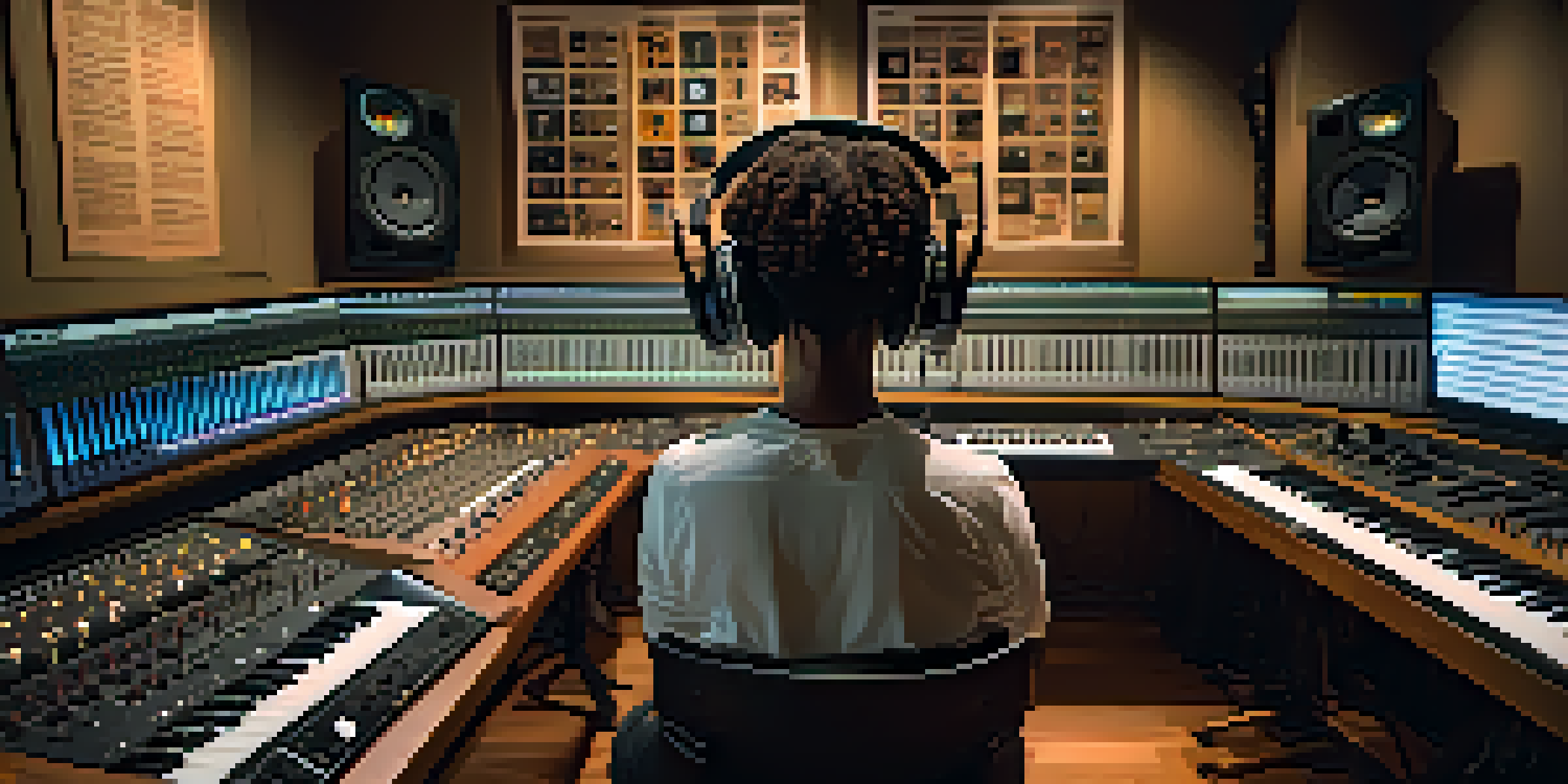The Role of A&Rs in Artist Development and Discovery

What is an A&R and Why Are They Important?
The term A&R stands for 'Artists and Repertoire,' and these professionals play a pivotal role in the music industry. They are essentially talent scouts, responsible for discovering new artists and overseeing their development. A&Rs act as the bridge between the artist and the record label, ensuring that both parties understand each other's vision and goals.
A&R is the bridge between the artist's creative vision and the business realities of the music industry.
An A&R's importance cannot be overstated; they help shape an artist's sound, image, and career trajectory. By identifying market trends and understanding listener preferences, A&Rs can guide artists in creating music that resonates with audiences. Their insights often lead to the success of a project, making them invaluable assets in the industry.
In addition to scouting talent, A&Rs also work closely with producers, songwriters, and marketing teams. They are involved in every step of an artist's journey, from recording sessions to promotional strategies. This multifaceted role showcases how A&Rs are not just talent finders, but also essential collaborators in the creative process.
The Process of Discovering New Talent
Talent discovery is a nuanced process, often requiring a keen ear and an open mind. A&Rs spend a considerable amount of time attending live shows, listening to demos, and exploring social media to find emerging artists. This proactive approach helps them stay ahead of the curve and identify unique voices that could captivate audiences.

Moreover, A&Rs often look for artists who have a strong online presence or a dedicated fan base. In today’s digital age, an artist’s ability to engage with their audience through platforms like Instagram or TikTok can be a significant factor in their potential success. A&Rs understand that a loyal following can translate into commercial viability, making digital discovery crucial.
A&R: Talent Scouts of Music Industry
A&Rs play a crucial role in discovering and developing artists, acting as the essential link between the artist and the record label.
Once a potential artist is found, A&Rs typically conduct a thorough evaluation, assessing not just the music but also the artist's personality and work ethic. Building a successful artist-brand relationship requires trust and alignment on creative visions, so A&Rs take the time to ensure they are making the right choice.
Nurturing Artists Through Development
Once an artist is signed, the nurturing process begins. A&Rs play a crucial role in guiding artists through the sometimes overwhelming landscape of the music industry. They help refine an artist's sound, often suggesting collaborations with songwriters and producers who can enhance their vision.
The role of an A&R person is to understand the artist's soul and translate that into a marketable product.
Development is not just about the music; A&Rs also focus on building an artist’s brand. This includes everything from image consulting to marketing strategies that align with the artist's vision. By crafting a cohesive brand identity, A&Rs help artists stand out in a crowded marketplace, making them more appealing to listeners and industry stakeholders alike.
In addition to creative guidance, A&Rs often provide mentorship to artists, sharing industry knowledge and helping them navigate challenges. This supportive relationship fosters an environment where artists can experiment and grow without fear of judgment, ultimately leading to more authentic and impactful music.
The A&R’s Role in Song Selection
Choosing the right songs is a critical aspect of an artist's success, and A&Rs are instrumental in this process. They analyze potential tracks, considering how well they fit the artist's style and current musical trends. This ensures that the artist's debut or subsequent projects resonate with their target audience.
A&Rs often collaborate with seasoned songwriters and producers to curate a selection of songs that highlight the artist's strengths. This collaboration can lead to innovative arrangements and fresh sounds, giving artists a competitive edge. The goal is to produce music that not only showcases the artist's talents but also appeals to industry gatekeepers like radio stations and playlists.
Nurturing Artists for Success
Beyond scouting talent, A&Rs guide artists through the industry, refining their sound and building their brand for greater marketability.
Additionally, A&Rs keep an eye on the ever-evolving music landscape, adapting song selections to align with emerging trends. This agility in decision-making is vital, as it enables artists to stay relevant and connect with listeners on a deeper level.
Building Relationships with Industry Professionals
A&Rs are often the linchpin in connecting artists with key industry professionals. From producers and engineers to marketing teams and booking agents, A&Rs facilitate relationships that can bolster an artist's career. These connections are essential for gaining access to resources and opportunities that might otherwise be out of reach.
The ability to network is one of the A&R's greatest assets. They often leverage their industry relationships to create collaborative projects or secure opening slots on tours. This not only elevates the artist's profile but also provides valuable exposure to new audiences.
Moreover, A&Rs act as advocates for their artists, representing their interests in meetings and negotiations. By fostering these relationships, A&Rs ensure that their artists receive the support they need to thrive in the competitive music landscape.
Adapting to Changes in the Music Industry
The music industry is constantly evolving, and A&Rs must adapt to these changes to stay relevant. With the rise of streaming services and changing consumer habits, A&Rs are tasked with understanding new distribution models and how they affect artist exposure. This knowledge is crucial for advising their artists on marketing and promotional strategies.
Additionally, A&Rs keep a pulse on emerging technologies that can enhance an artist's reach. From social media algorithms to innovative music distribution methods, staying informed allows A&Rs to leverage these tools effectively. This adaptability ensures that artists remain competitive in a rapidly changing environment.
Adapting to Industry Changes
As the music landscape evolves, A&Rs must stay informed about new distribution models and technologies to effectively support their artists.
Ultimately, an A&R's ability to anticipate industry shifts and trends can make a significant difference in an artist's career trajectory. By embracing change and encouraging artists to innovate, A&Rs help shape the future of music.
The Future of A&Rs in Artist Development
As the music industry continues to evolve, the role of A&Rs is also changing. With advancements in technology and the rise of independent artists, the traditional A&R model is being reassessed. However, the core responsibilities of nurturing talent and fostering relationships remain vital.
In the future, A&Rs may increasingly rely on data analytics to inform their decisions. By analyzing listener habits and demographic trends, they can make more informed choices about which artists to sign and how to develop their careers. This data-driven approach could enhance the effectiveness of A&R strategies.

Despite the challenges posed by a changing landscape, A&Rs will always be essential in the artist development process. Their unique blend of creative intuition and business acumen will continue to shape the careers of aspiring musicians for years to come.